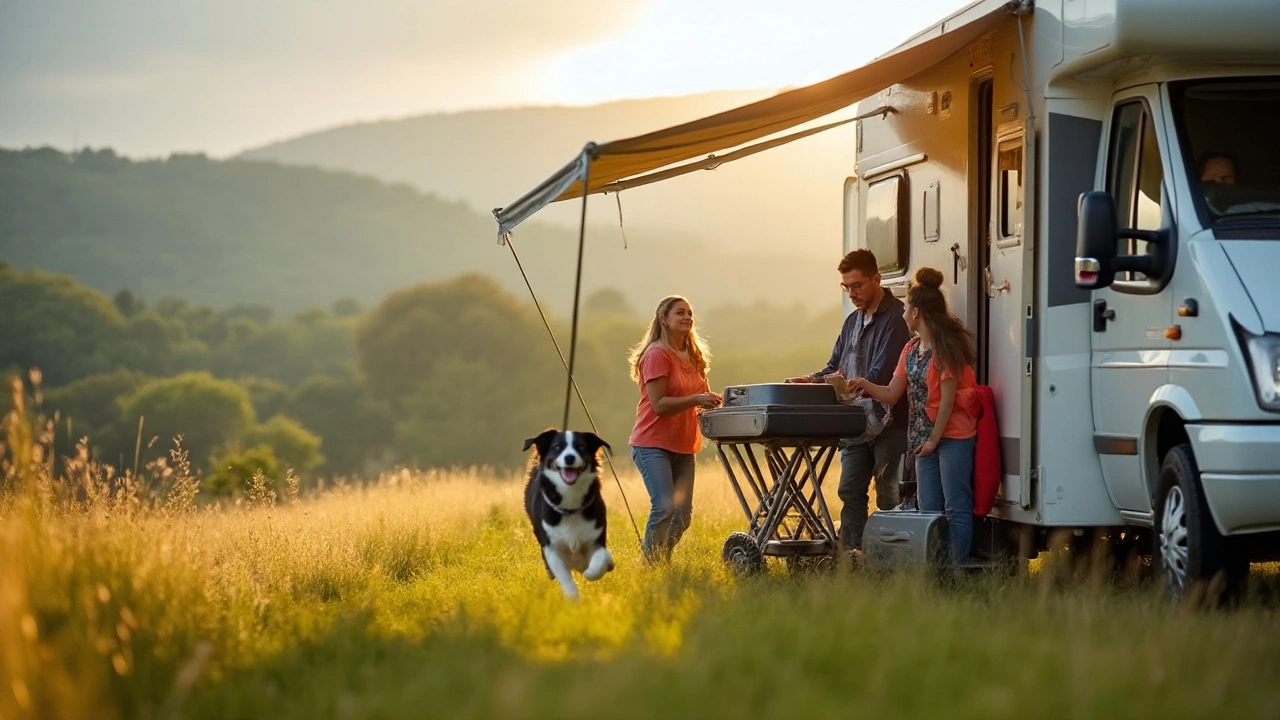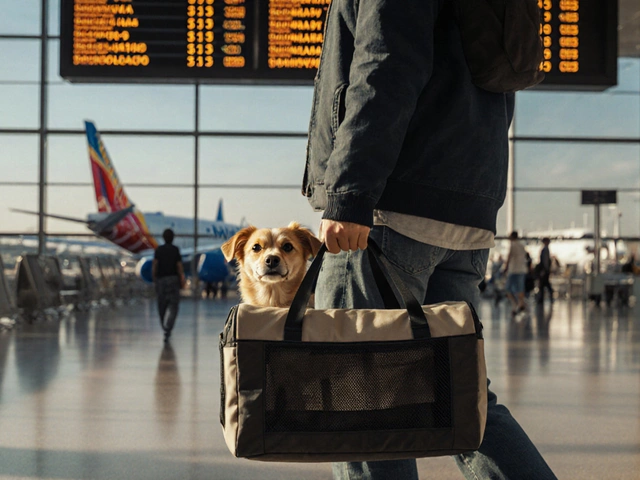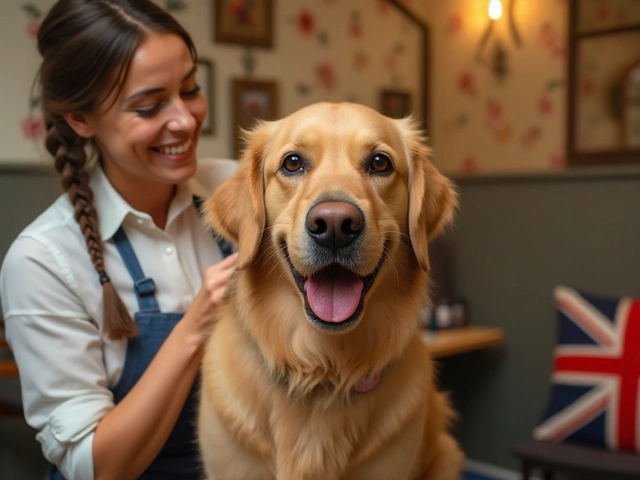Traveling with your pet can sometimes feel like a mammoth task, especially when the idea of flying is taken off the table. Whether it's the potential stress on your furry friend or logistical hurdles that deter you from air travel, rest assured that there are plenty of other ways to get where you need to go together.
This guide delves into a variety of pet-friendly travel options that don’t involve boarding a plane, each designed to make your journey as smooth and enjoyable as possible. Whether you choose to explore the open roads or utilize professional pet transport services, your pet's comfort and safety remain paramount.
- Why Avoid Flying with Pets?
- Pet-Friendly Road Trips
- Pet Relocation Services
- Preparing Your Pet for Travel
Why Avoid Flying with Pets?
Flying can be a daunting experience for many, humans and animals alike. When considering your pet travel plans, it's crucial to understand why taking to the skies might not be the best option. First and foremost, the noise and bustle of airports coupled with the overwhelming environment of an aircraft cabin can be a huge source of stress for our animal companions. Imagine being in a small, enclosed space amidst the roar of engines and unfamiliar faces—it's enough to make even the calmest pet uneasy. Additionally, changes in air pressure can cause discomfort or ear pain, similar to what we experience, but without the ability to equalize the pressure, pets may find it more distressing.
Animals transported in cargo hold also face additional risks. Temperature fluctuations and limited ventilation, especially on long-haul flights, can prove hazardous to a pet’s well-being. Due to these issues, many airlines have restrictions and require pets to travel in specific conditions. In fact, the Humane Society of the United States suggests avoiding pet air travel completely unless absolutely necessary. Costs associated with flying with pets can also mount up; fees for carry-on and cargo transport quickly add up alongside expenses for pet care before departure, such as health checks and vaccinations.
Furthermore, there are instances where unavoidable delays or re-routing can exacerbate the situation, leaving pets stuck in transit environments ill-suited for their needs. Regulations are strict, and not adhering to them can result in complications or last-minute issues. Traveling with Pets often means adhering to complicated paperwork and regulations, which can invite unnecessary headaches for pet owners. When relocated in the cargo hold, pets require specific crates or carriers that meet stringent airline regulations, pressing yet another significant cost and logistical hurdle.
A statistic worth noting is that according to the U.S. Department of Transportation, airlines reported over two dozen animal deaths and injuries within a single year. This underscores the inherent risks associated with air travel for pets. Airlines and various transportation authorities continue working to minimize these issues, yet the potential dangers cannot be overlooked.
"Understanding the full scope of what air travel entails for animals is essential," says Jessie Miller, an animal welfare expert, "Pets are part of our family, and their safety should be a priority."

Pet-Friendly Road Trips
Setting off on a road trip with your beloved pet can transform a mere journey into a grand adventure. While flying might offer speed, hitting the open highway allows you to soak in the landscapes at your own pace, with your pet comfortably beside you. Many pet owners opt for this alternative, not only to avoid the stress of airline travel but also to indulge in the freedom and flexibility it offers. You can stop along scenic routes, explore new destinations with furry companions, and build unforgettable memories.
Before embarking on a pet travel road trip, certain preparations are key to ensuring it's enjoyable for both ends of the leash. Consider using a dedicated pet seatbelt or a well-ventilated crate to keep your friend safe during the drive. It's wise to plot your route meticulously, choosing pet-friendly accommodations and rest stops that allow ample room for walks and play. If you're unsure, platforms like BringFido offer a comprehensive list of pet-friendly lodgings and parks across various destinations.
The idea of travel can sometimes unsettle our animal companions, so accustom your pet to car rides well in advance of your trip. Start small with short excursions, gradually extending them as your pet becomes more comfortable with the experience. Be mindful of their well-being during the trip; maintaining a balance of rest, exercise, and food will help keep them content. Pack a travel kit with your pet's necessities, including water, a bowl, their preferred food, and perhaps a comfort item like a favorite toy or blanket.
According to Dr. Kathryn Primm, a renowned veterinarian, "Keeping your pet's routine as steady as possible and providing reassurance can greatly diminish anxiety on the road."
While engaging in a road escapade, your pet's safety should always be your top priority. Never leave them unattended in the vehicle, especially during warm weather—cars can heat up rapidly, posing a serious risk of heatstroke. Should you need to take breaks, make sure to choose spots where your animal can safely stretch and explore. The excitement of travel can sometimes be overwhelming, and a little exercise is a great outlet for pent-up energy.
In terms of planning, always have a backup plan. Sometimes, despite best-laid plans, unforeseen circumstances might require alterations to your journey. Remaining flexible and having a list of alternate pet-friendly stops prepared can make a significant difference. Engaging in a road trip with your pet involves not just reaching a destination but enjoying everything along the way, creating a journey filled with joy and wagging tails.
To truly champion the art of pet travel by car, know that this experience is about the shared moments. From the joyful breeze ruffling fur as the window is slightly cracked open to the inquisitive sniffs at a new park, it's these instances of togetherness that convert routine travels into lifelong cherished stories between you and your pet.

Pet Relocation Services
Considering long-distance travel with your pet without the stresses of flying has led many owners to explore the realm of pet relocation services. These services are meticulous about ensuring comfort and safety for pets as they transit across regions or even internationally. With a wide array of offerings, pet transport companies have revolutionized how we think about and manage pet travel logistics.
Pet relocation companies typically provide a seamless, door-to-door service, taking all the anxiety out of your journey. They handle everything from documentation requirements—importantly, those pesky quarantine rules—to ensuring that the travel crates meet all relevant safety and comfort standards. Some companies even offer special features like climate-controlled vehicles or live GPS tracking, allowing you to monitor your pet's journey in real-time. These innovations are particularly useful for owners with anxious pets who need that extra reassurance and comfort.
Quote: "Our mission is to ease the stress for both pets and their owners," says Linda Adams, a relocation expert at Pet Movers International, highlighting the burgeoning demand for dedicated animal transportation services. She adds, "With thorough attention to detail and care, we ensure a safe journey, regardless of the distance."
When choosing a relocation service, research is your best friend. Always vet the credentials of the company, and don’t hesitate to ask questions about their procedures and animal-handling experience. The International Pet and Animal Transportation Association (IPATA) is a fantastic resource for finding accredited service providers. It's important to read reviews, compare services, and even consult with a vet to ascertain what’s best for your pet's health needs.
| Relocation Service | Key Feature | Additional Benefit |
|---|---|---|
| Global Pet Transport | Climate-controlled vehicles | Real-time GPS tracking |
| Pet Relocation Express | Door-to-door service | Custom travel crates |
For those dealing with complex international moves, relocation services can be a godsend. These professionals are adept at navigating the labyrinth of microchipping requirements, vaccinations, and country-specific entry rules ensuring nothing is missed and your pet’s travel papers are in order. Not to mention, specialized attention is given to various breeds and their specific travel needs, offering peace of mind and assurance to pet lovers worldwide.
In the grand scheme of things, choosing to travel via a pet relocation service removes the pressure of logistics and gives you confidence that your pet's journey will be as smooth and safe as possible. This opens your pet to new adventures and experiences without compromising their safety and comfort, paving the way for cherished memories to cherish forever.

Preparing Your Pet for Travel
When it comes to getting ready for a trip with your pet, proper preparation can make all the difference. Before setting out, it's crucial to evaluate your pet's health and temperament to determine the most suitable travel method. A visit to the veterinarian is not just a formality; it is an opportunity to ensure your pet is fit for travel. The vet can perform a comprehensive health check, update vaccinations, and provide essential travel advice. Some pets may even benefit from anti-anxiety medication or motion sickness treatments during the journey. Being proactive about your pet's health is the first step in ensuring a stress-free travel experience.
A well-planned trip starts with training your pet to be comfortable in whatever mode of transit you choose. If you're planning a pet travel adventure by car, consider acclimating your pet to the vehicle ahead of time. Begin with short trips, gradually increasing the duration to avoid any undue stress. Equip your vehicle with a pet seat belt, carrier, or crate to keep them secure and minimize distractions for drivers. On the other hand, if utilizing pet relocation services, frequent carrier training can make the process smoother. Familiarity with their travel environment reduces fear and anxiety, resulting in a more enjoyable experience for your furry friend.
The American Veterinary Medical Association emphasizes the importance of pet identification during travel: “Ensure your pet is microchipped and has up-to-date identification tags. This simple step can be a lifesaver in unfamiliar environments.”
Creating a travel bag for your pet is as essential as packing your own. This should include a water bowl, sufficient food, treats, medications, and comfort items like their favorite toy or blanket. A pet passport or a pet identification card containing vital information, such as vaccination records and your contact details, is also recommended. Besides the basics, do not forget waste bags and a leash for those necessary breaks and walks along the way. Consider every eventuality, to avoid unexpected hassles during your journey.
Ensuring that your pet is used to his leash and harness is part of the preparatory steps for travel. Regular practice can make a big difference in their behavior, especially during those much-needed breaks. Breaks are important, not just for bathroom needs but to allow your pet to stretch and release pent-up energy. Timed breaks can help maintain a positive mood and energy levels during the long hours on the road. Developing a routine that integrates meals, exercise, and rest times will be incredibly beneficial during travels.
Lastly, remember that each pet is unique, and what works for one might not be suitable for another. Some pets thrive on routine and predictability, while others are more spontaneous and adaptable. Understand your pet's needs and adjust your plans accordingly. Adjust for their comfort levels to ensure their welfare is prioritized, leading to a more relaxed and enjoyable journey altogether. Whether embarking on a road trip or entrusting them with pet relocation services, a personalized travel approach tailored to your pet’s specific needs is often key to a successful journey.







